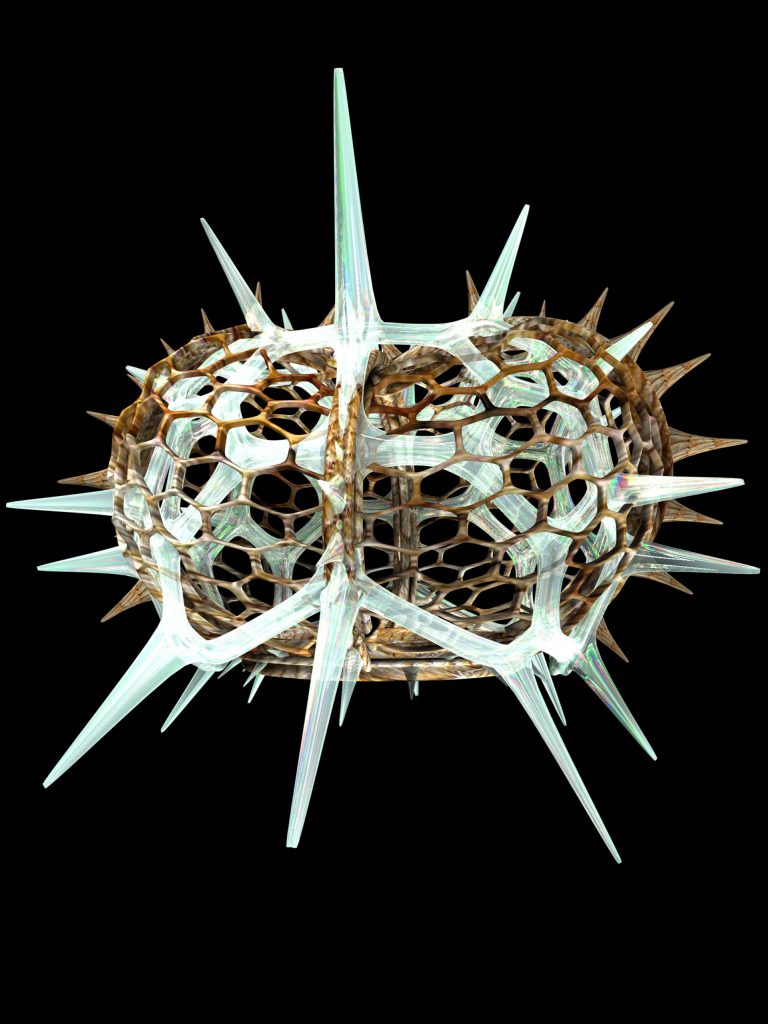
‘Ernst’ the Future Plankton is named after the German artist and scientist Ernst Haeckel published “Art Forms in Nature” at the turn of the century, when our oceans were healthy and robust.
‘Ernst’ the Future Plankton imagines what a plankton of the future might evolve into to combat the stressors of the today’s ocean. ‘Ernst’ the Future Plankton can thrive in acidic low oxygen conditions, has zooxanthellae to photosynthesize and create energy, can metabolize sulfur in conjunction with symbiotic gut bacteria and can break down microscopic plastics and “eat” them producing extra energy. It also has a super absorbent calcium carbonate skeleton which absorbs carbon dioxide so when it dies it sequesters this on the oceans seabed.
At this time there are vast dead zones in the ocean the size of continents caused by disruptions to planktonic ecosystems. Plankton creates about half the planet’s oxygen, sequesters carbon dioxide and comprises the basic building blocks for the ocean’s food system. ‘Ernst’ the Future Plankton addresses the pertinent question of whether we will become involved in the evolution of the microscopic and microbial world as a means of survival? We could potentially bio-engineer planktonic species impervious to ocean acidification, that consume microscopic plastic and might be harvested as food and utilized as an alternative energy supply. ‘Ernst’ the Future Plankton however also raises the ethical dilemma that this kind of interference in the natural world could further disrupt our biosphere and speed up the 6th mass extinction. Most importantly, ‘Ernst’ the Future Plankton examines our role as a species both sentient and with incredible mastery of technology to make these kinds of decisions that will affect not only our own evolution but the evolution of all life on planet.